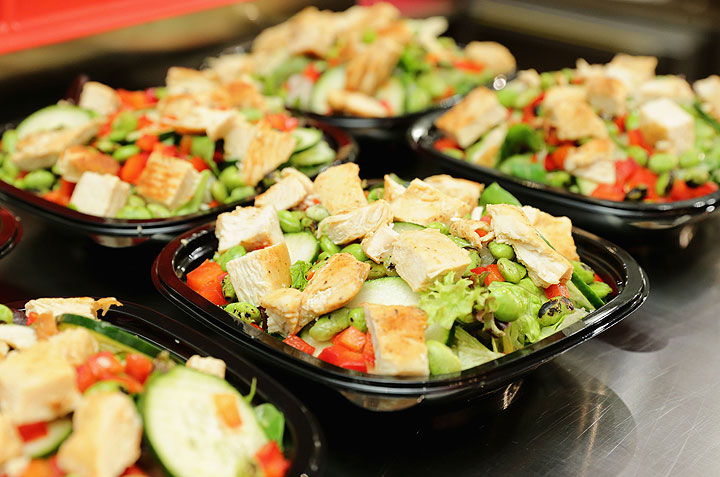Kale could be coming to a McDonald’s near you. It looks like the fast-food giant plans to introduce the leafy green as an ingredient in a “not-so-distant future,” according to MarketWatch. Jumping on the superfood bandwagon would be the company’s latest attempt to “get healthy,” as its sales continue to plummet.

McDonald’s global sales declined again in February, including a four per cent drop in the U.S. where it’s fighting to reinvigorate its image.
Just last week, the company promised to limit the use of antibiotics in chicken within the next two years (but not in Canada). And executives have hinted that the company might simplify recipes to remove preservatives in some items. Whole grains and more vegetables on salads are being added to the Canadian menu, meanwhile.
READ MORE: As more Canadians pass on fast food, McDonald’s tries to get fitter
McDonald’s isn’t the only one pulling out all the stops in this department. To cater to the pressures of health-conscious parents, Wendy’s recently dropped soda from kids’ menus in the U.S., a measure that’s already been in place in Canada for several years. Burger King is also doing the same in the U.S. Now children’s drink options include bottled water, juice and one per cent white or chocolate milk.
Speaking of milk, with soda sales slipping — an industry analyst said it’s the fastest declining item in the Canadian restaurant market — Coke is coming out with a “super” milk. It has more protein and less sugar than regular.
READ MORE: Would you pay double for milk with more protein, less sugar? Coke’s betting on it
There’s also a new trend of major brands tucking away their famous logos in favour of more hipster guises: PepsiCo, for instance, introduced a craft soda called Caleb’s Kola last year which comes in a glass bottle and is sweetened with cane sugar instead of high-fructose corn syrup.
READ MORE: How big food companies are stealthily targeting hipsters
- Posters promoting ‘Steal From Loblaws Day’ are circulating. How did we get here?
- Canadian food banks are on the brink: ‘This is not a sustainable situation’
- Video shows Ontario police sharing Trudeau’s location with protester, investigation launched
- Solar eclipse eye damage: More than 160 cases reported in Ontario, Quebec
It’s not just big food companies that are pushing the healthy options. President’s Choice cut out artificial flavours and colours from its brand in 2013.
Will it work?
That’s up for debate.
Dr. David Just, a professor and co-director of the Cornell Center for Behavioral Economics in Child Nutrition Programs, said these measures are “almost certainly not enough to move the needle on obesity.”
“Most of these changes really just nibbles around the edges,” Just said.
“It is commendable to make attempts to offer healthier options, and this will have a substantive impact on those who are highly health-conscious and knowledgeable. On the other hand, for those who are less knowledgeable, this type of move can give the appearance of healthy to some of the items that are pretty bad for you.”
He adds that this type of “health halo” can cause consumers to underestimate their caloric intake and overindulge in these “healthier” options.
READ MORE: How fast food tried to get svelte in 2014
“We choose the low fat chips and then take the double cheeseburger as a reward. This means that often the average consumer will end up worse off.”
Marketing professor Gad Saad, who specializes in a field he coined “evolutionary consumption,” believes that our consumer behaviour boils down to human nature.
He explains that we evolved in an environment of caloric scarcity, not knowing where our next meal would come from. So we would, for instance, opt for the “fatty bison” rather than raw berries. Saad believes despite today’s “environment of plenty,” we’ve become somewhat wired to eat as if that caloric scarcity were still a reality.
So these new “healthy choices” will only work, he thinks, if you can be convinced they’re still tasty.
Another potential solution that Just suggests is if restaurants just made these changes without advertising them.
“Then we don’t see the same overcompensation. But, that also means they wouldn’t be able to take credit for the menu improvements or reach additional customers. This is the real puzzle.”
With files from Jamie Sturgeon and Carmen Chai, Global News and The Associated Press
Follow @TrishKozicka


Comments